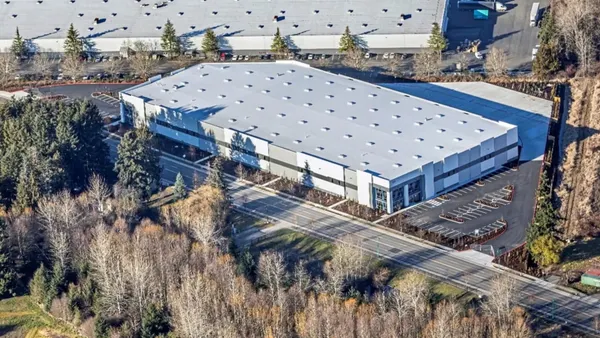Dive Brief:
- As the U.S. pork industry struggles because of the pandemic, about two million hogs, that would otherwise be processed, are living on farms because of disruptions at plants, according to an analysis by Steve Meyer, an economist with Kerns & Associates.
- The analysis, cited by the National Pork Producers Council (NPPC), also said potential revenue from hog sales in 2020 will drop by about $4.7 billion based on lean hog futures prices. Other losses from euthanasia, disposal and donation of pigs bring the actual and potential losses to nearly $5 billion for the year with more financial challenges expected in 2021.
- "This is, by far, the worst financial disaster ever for American hog farmers, who were already in a weakened financial position due to two years of trade retaliation," Meyer said. "If COVID prompts additional plant disruptions — a real possibility — the number of hogs backed-up on farms will swell precipitously.”
Dive Insight:
Even though processing plants are returning back to normal production levels, the pandemic is still causing financial and logistical challenges for pork producers expected to continue into next year. The industry's major trade group is urging congressional action to help struggling producers.
This month, lawmakers in the Senate introduced the Relief for Producers Act of 2020 that would give compensation to farmers who are euthanizing their animals because of the pandemic. The NPPC said it "strongly supports this legislation" and is pushing for Congress to act quickly. The group also supported additional federal assistance being backed by Rep. Collin Peterson, the top Democrat on the House Agriculture Committee.
"It’s imperative that Congress act now, or else thousands of farmers could go out of business, leading to consolidation and contraction of the U.S. pork industry," Howard Roth, a Wisconsin hog farmer who is NPPC's president, said in a statement.
The government has already issued some help to the industry. The U.S. Agriculture Department said it would spend $3 billion to buy fresh produce, dairy and meat that will be sent to food banks after the closure of foodservice and restaurants during the pandemic have significantly hurt demand.
This year has taken a drastic and dire turn for the pork industry after initial optimism. Facing hardship caused by trade disputes and labor shortages in recent years, U.S. pork farmers entered 2020 expecting to post a profit. But when the pandemic hit, processing plants started to shutter as coronavirus spread among workers, causing the supply chain to back up and leaving hog farmers with no where to send their animals.
The pandemic has infected thousands of plant workers in the meat industry and forced more than 40 plants across the country to temporarily close down or reduce production. In April, President Donald Trump issued an executive order using the Defense Production Act to keep facilities open and prevent shortages. Labor unions have strongly criticized the order saying it puts workers at risk, while industry groups, including the NPPC, praised the move for helping get the supply chain moving.
Despite improvements, this new analysis showed the backlog is still prevalent. Many producers have turned to euthanasia to quell the overcrowding on farms. The U.S. Department of Justice's antitrust division announced in May it wouldn't challenge the proposed efforts of the NPPC to work with the USDA to euthanize hogs because of the oversupply caused by the pandemic. The NPPC told the DOJ that euthanizing potentially 700,000 hogs per week "will be unavoidable." Millions of chickens also have been killed as closures diminish demand for poultry.
As the pork industry continues to face challenges, the NPPC is hoping the proposed bill in Congress, which would compensate hog and poultry producers while increasing funding for animal health surveillance and laboratories, will pass and help struggling producers stay afloat.














